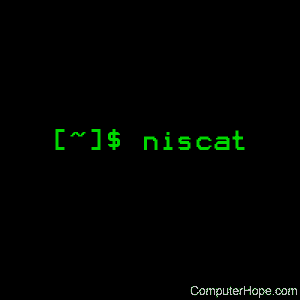Linux niscat command

On Solaris, the niscat command displays NIS+ (Network Information Service) tables and objects.
Description
In the first syntax form above, niscat displays the contents of the NIS+ tables named by tablename.
In the second syntax form, niscat displays the internal representation of the NIS+ objects named by name.
Syntax
niscat [-AhLMv] [-s sep] tablename...
niscat [-ALMP] -o name...
Options
| -A | Display the data in the table and all the data in tables in the initial table's concatenation path. |
| -h | Display the header line before displaying the table. The header consists of the '#' (hash) character followed by the name of each column. The column names are separated by the table separator character. |
| -L | Follow links. When this option is specified, if tablename or name names a LINK type object, the link is followed and the object or table named by the link is displayed. |
| -M | Master server only. This option specifies that the request should be sent to the master server of the named data. This guarantees that the most up-to-date information is seen at the possible expense of increasing the load on the master server and increasing the possibility of the NIS+ server being unavailable or busy for updates. |
| -P | Follow concatenation path. This option specifies that the request should follow the concatenation path of a table if the initial search is unsuccessful. This option is only useful when using an indexed name for name and the -o option. |
| -v | Display binary data directly. This option displays columns containing binary data on the standard output. Without this option binary data is displayed as the string "*BINARY*". |
| -o name | Display the internal representation of the named NIS+ object(s). If name is an indexed name (see nismatch), then each of the matching entry objects is displayed. This option is used to display access rights and other attributes of individual columns. |
| -s sep | This option specifies the character to use to separate the table columns. If no character is specified, the default separator for the table is used. |
Environment
If the NIS_PATH environment variable is set, and the NIS+ table name is not fully qualified, each directory specified is searched until the table is found (see nisdefaults).
Examples
niscat -h hosts.org_dir
Display the contents of the host table. Output resembles the following:
# cname name addr comment client1 client1 129.144.201.100 Joe Smith crunchy crunchy 129.144.201.44 Jane Smith crunchy softy 129.144.201.44
If the user has insufficient permissions to view the contents of any given field or entry, the string "*NP*" is printed.
Related commands
nisdefaults — Display NIS+ default values.
nismatch — Utilities for searching NIS+ tables.
nistbladm — Administer NIS+ tables.
